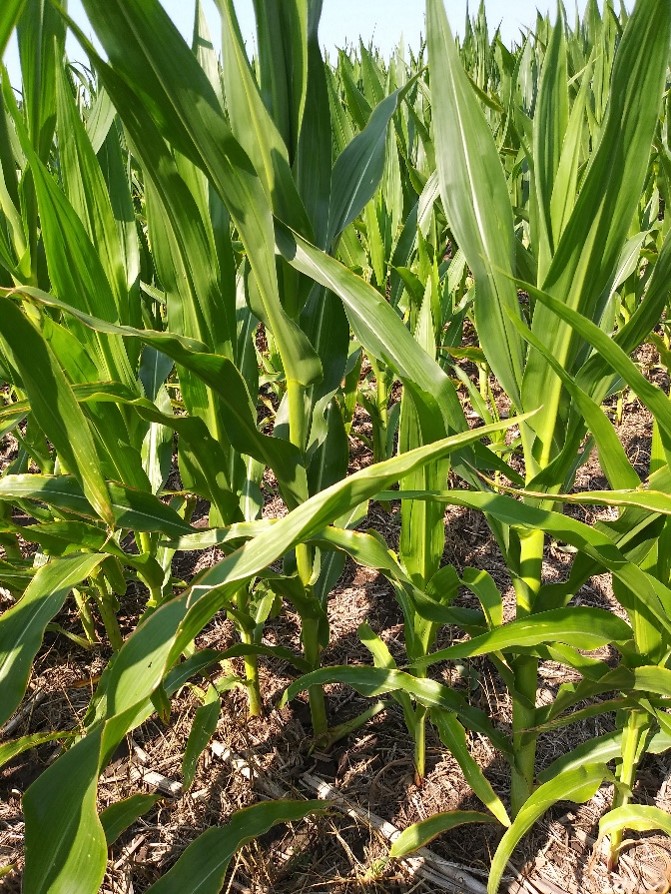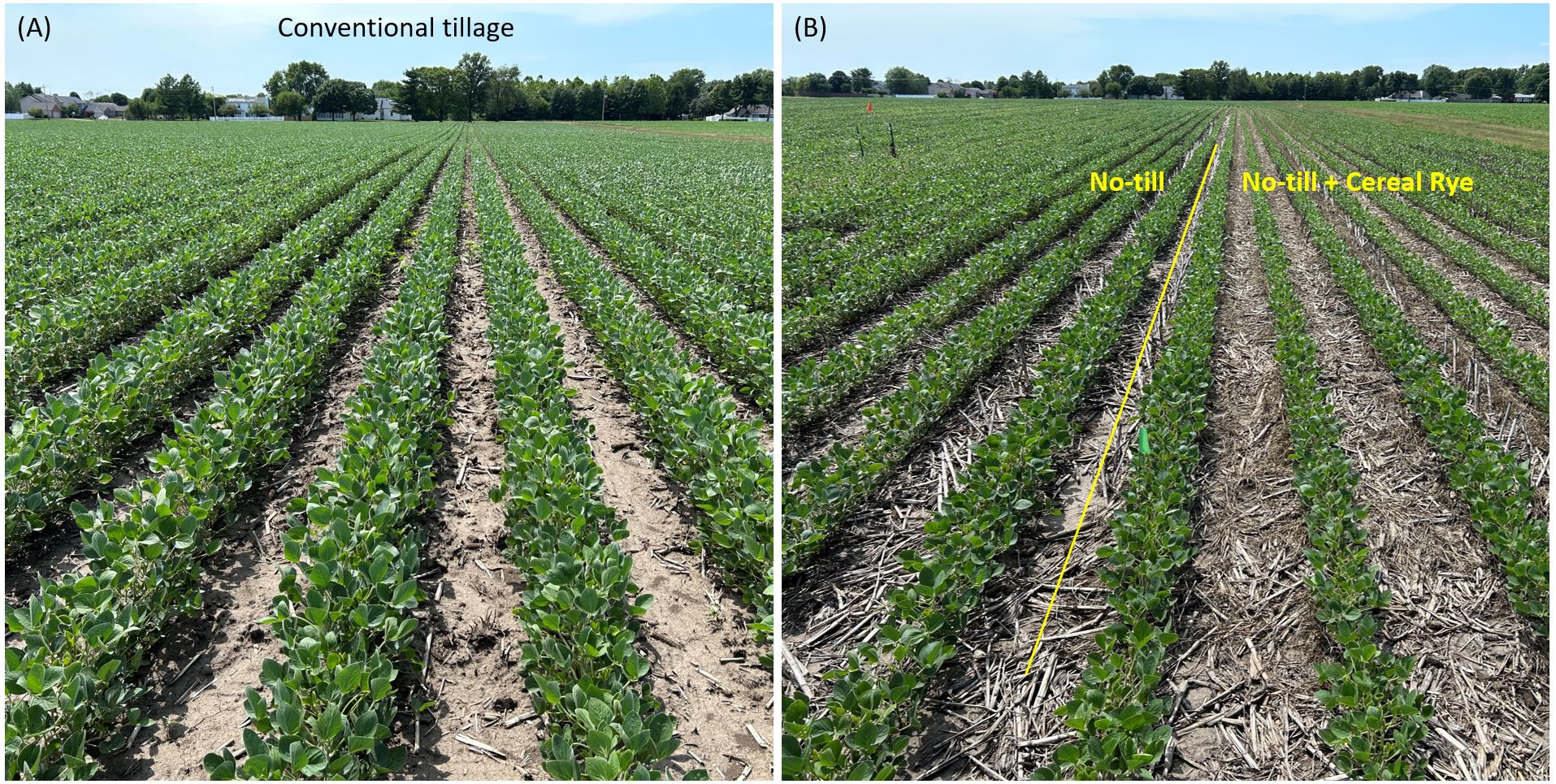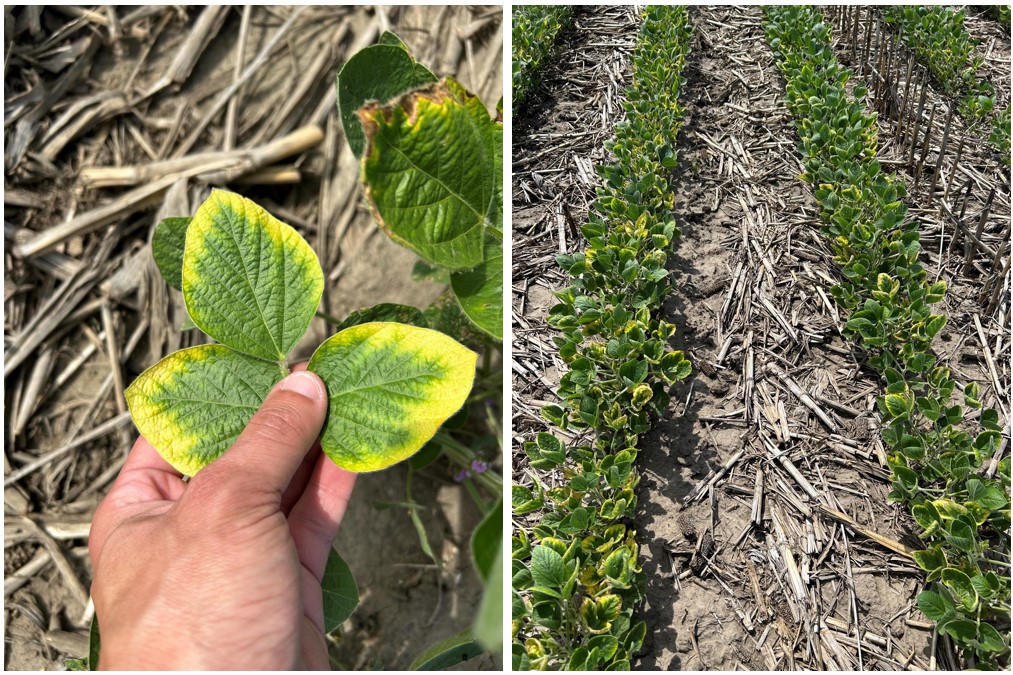Rainfall may not completely reverse the effects of drought

Nearly all of Illinois received rainfall in the late June and early July, with amounts of 2 to 5 inches across a large part of the state (Figure 1). There is more variability than the map shows – for example, only 1.67 inches fell at Willard Airport near Champaign, not the 2.5-3” indicated on the map. But there is no doubt that the rain boosted crop prospects for 2023, and reversed the month-long decline in crop condition.
The decline in crop ratings over the month of June in Illinois was one of the largest we have seen: corn crop condition fell from 69% good + excellent on May 22 to 26% G+E on June 26. Rainfall brought the rating up to 36% G+E on July 2. Ratings might go up again, but we have not had ratings this low since 2012, when ratings dropped from about 50% G+E in mid-June to 10% by mid-July.
Despite the steady fall in crop conditions ratings through June, we held out hope that rainfall by late June could mostly reverse the effects of drought on the crop, much like we saw happen in 2022. But we may be misremembering what happened in 2022: corn ratings were 81% G+E on June 5 and fell only to 65% on July 3 before rising again after that. The two years were more similar in Champaign County than they were statewide, but crop ratings tell a very different story for 2023 than they did for 2022. Unfortunately, the ratings may be more accurate than our memories or our wishful thinking.
As in most dry years, crop conditions vary greatly across relatively short distances. A field in southwest Champaign, planted in the second week of April, has good stands, good canopy cover and color, is pollinating this week, and shows the potential for high yields. It’s likely that June rainfall was higher there than at the airport about a mile south of the field. In any case, the crop showed little stress over the past month.
Drought effects that recent rainfall will not erase completely include poor canopy color and cover from inadequate water over prolonged periods, and very uneven growth of plants in many fields and parts of fields. Figure 2 shows no-till corn that was planted on April 27. It emerged well and grew fairly uniformly during most of May, but as it moved into mid-vegetative stages (V8-10), competition between plants for the limited supply of soil water meant that some plants gained an enormous advantage over others. All of the plants show less growth than we would normally expect; note in the photo (taken in mid-morning on July 3) how much light is reaching the ground at a stage when leaves should be intercepting 90 percent of the light or more. Plots in this study that were planted following tillage are in better shape, but they do not have the dense, dark canopy that we associate with high yield potential.

A crop canopy like that shown in Figure 2 is not great, but large differences in plant size evident in many fields will further erode yield potential. Figure 3 shows two adjoining plants: the one on the right is of more or less normal height (which is shorter than normal this year), while the one on the left is less than half as tall, with less than half the leaf area, and what will likely be much less than half the yield of its larger neighbor. The internodes on the short plant are very short; this plant was at V12 at the time of the photo, while the taller one was at V13. This crop accumulated about 1,250 growing degree days between planting and July 3, so it should be tasseling now, or very soon. We can expect both plants to add leaf area by the time they pollinate, but they won’t set enough kernels for high per-plant yields.

This uneven growth is more evident in no-till fields, in fields planted following cover crop (especially if the cover crop was not killed before, or very long before, planting), and in soils with compaction issues. In some cases, plants have shown some yellowing of the edges of lower leaves that we believe is K deficiency – plants in Figure 2 show some of this. This is not due to low soil-test K levels, but to the inability of roots to grow in dry soils to reach K, and the inability of K to move through dry soil to the roots.
The recharge of soil water should provide a boost to plant growth, although there’s not enough leaf area still left to develop to fully restore canopies in most fields. Plants will gain some additional height, but the effect of unevenness in plant size at this growth stage will not go away even if we have good growing conditions through the rest of the season. The derecho on June 29 pushed some plants over, especially on the edge of fields. These should have time to turn back up with minimal effect on yield.
Soybeans
Soybean plants are shorter than normal for this time of year, and like corn, have suffered a significant drop in crop conditions ratings: the Illinois soybean crop dropped from 67% G+E on May 22 to only 25% G+E on June 26, before moving up slightly to 30% G+E on July 2. One of the mechanisms soybean plants use in response to drought is slowing their leaf area expansion rate. Most soybeans have shown a resurgence of growth since rain fell, and we believe that most fields still have the potential to produce enough pods for good yields.
While soybeans do not show the unevenness in plant size that we’re seeing in corn, those that have been under more drought stress – including some fields planted no-till and some planted following cover crop rye – have shown reduced growth and leaf area. Figure 4 is a photo taken on July 7 of soybeans planted near Urbana on May 12. Soybeans were at the R2 growth stage in conventional tillage, V7 (pushing R1) in no-till, and V6 in no-till with cereal rye cover crop. Soybean plants generally develop about half of the potential trifoliate nodes by R1, and vegetative growth continues through mid-reproductive stages. Another advantage of soybean over corn is that the flowering and seed-filling stages take several weeks to complete, giving the plants more time to recover from stresses such as dry soils.

Potassium deficiency was also observed in parts of the field, and symptoms were more pronounced in no-till soybeans that were at earlier growth stages. Under dry conditions, symptoms may develop from the V3 stage up to more advanced vegetative stages, mainly in the older leaves. If deficiency persists, symptoms may progress to the upper leaves because K is mobile in the plant and translocates from old to young leaves. Like in corn, symptoms are yellowing along the leaf margins, followed by scorching and dieback with severe deficiency. Figure 5 shows examples of typical K deficiency symptoms in soybeans.

While we expect soybeans to show better recovery from the dry June weather than corn, it’s not a certainty that they’ll recover to produce above-trendline yields. Positives include the fact that limited canopies don’t shade the lower leaves very much, which can help pod numbers on lower nodes. It’s also possible that good moisture and moderate temperatures can help the plants add more nodes (with pods) than they might normally produce – we saw some of this in 2022. Still, the crop is currently intercepting less sunlight than it usually does at this growth stage, and we can’t be sure it will set and fill the large number of pods it takes for high yields. It will be early August before we’ll have an idea of yield potential in most fields.





